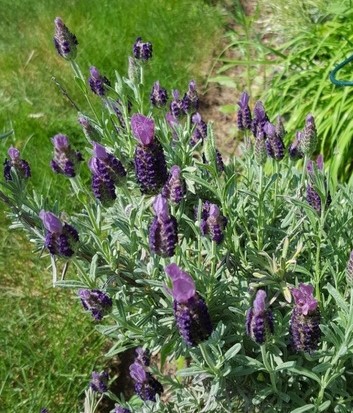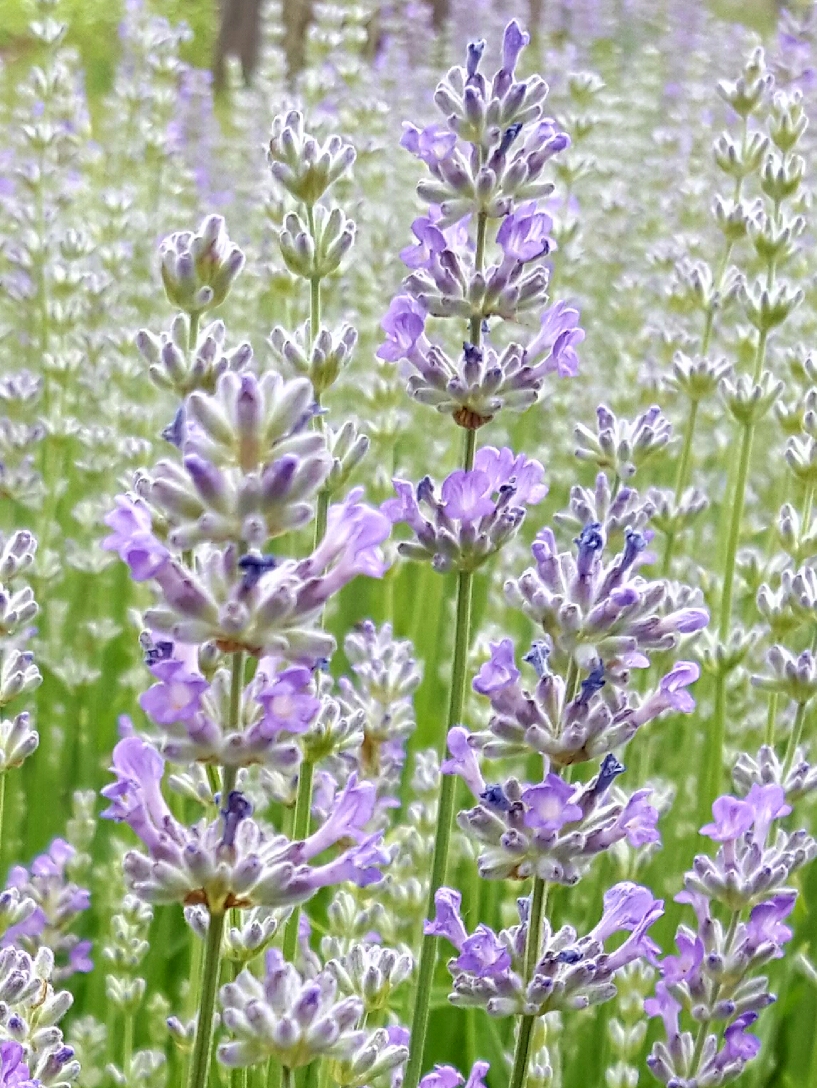
Spanish lavender in my garden
Lavender (Lavandula spp) is a genus of flowering plants related to the mint family which contains 47 species. The best known of these species are English lavender (L. angustifolia), French lavender (L. dentate) and Spanish lavender (L. stoechas). All lavenders are native to the Mediterranean area and Middle East to India. The plants are well adapted to their arid environment making them popular in xeriscapes.
Lavender has been known and used since ancient times, both medicinally and as a culinary herb. It is the flowers that are used in cooking. Both the leaves and the flowers are used to extract the essential oil that is so popular for both perfumes and aromatherapy use. Its fragrant leaves make it deer resistant.
The plants are small shrubs that, depending on the cultivar, range in size from 10 inches to 36 inches in height. English lavenders are hardy through zone 5, while the French and Spanish lavenders are only hardy through zone 7. All flower in the spring. The flowers are blue, light purple or dark purple. Some newer cultivars have flowers that are pink or white.
Lavender should be grown in full sun and well-drained soil. They are susceptible to root rot so drainage is important. Avoid using organic mulches which will keep the crown of the plant and the surrounding soil too wet. Gravel used as a mulch is a better solution.
Most gardeners purchase lavender plants but you can propagate lavender. The easiest way is by cuttings. Cuttings should be taken in early spring when the plants are actively growing. Cut a six inch branch from the plant. Strip the bottom leaves off and dip that portion in rooting hormone. Place in a pot of moistened sand or potting soil that is specifically formulated for drought tolerant plants. Keep your cutting(s) in semi-shade until well-rooted. Only then can you safely move your new plants into full sun.
Another propagation technique that can be used on lavender is layering. In the spring, instead of removing a branch from the plant, select an 8 inch branch and bend it to the soil without breaking it. This is best done with new growth rather than older, stiff woody growth. Remove the leaves from the part of the branch that rests on the ground and sprinkle rooting hormone in that place. It also helps to lightly scar that part of the branch with a sterile knife. Cover the branch with soil leaving the tip uncovered. By the following year, roots should have formed. At that time, you can cut the branch from the plant, carefully dig up the root ball and surrounding soil, and move the new plant to its permanent location.
It is possible now to grow lavender from seed. Formerly, germination was erratic and the resulting plants varied in appearance and height. Seed from reputable dealers will now give you consistent results.
Start your seeds indoors 6 to 8 weeks before your last frost. Surface sow them. Do not cover them with soil because they need light to germinate. Use a light soil mix or vermiculate for good drainage. Germination should occur within 2 weeks as long as the temperature remains at 70⁰F. When the seedlings have developed their first set of true leaves, you can transplant them into their permanent location. They will grow slowly their first year. After that, they will grow at a normal rate and bloom.
Wait until the second year to prune your new plants. Prune lightly to encourage branching. You can prune established plants in the spring, removing one third of the woody branches. Or you can wait until after they have bloomed. Shear off the spent flower stems and lightly shape your plants. Older, woody plants can be rejuvenated by severe pruning.
Lavender flowers are used both in cooking and for crafts. Harvest the flowers right before they open to ensure the most fragrance. Choose a dry day and cut the flowers early in the morning after the dew has dried leaving a long stem. A good rule of thumb is to cut the flower stems back to the foliage. If you want to both harvest the flowers while leaving flowers in your garden, remove only one third of the flowers in a random manner to avoid leaving holes with no flowers. The flowers can be dried by hanging them upside down in bunches or by spreading them in a single layer on a screen.

